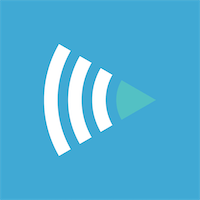In 2011, Cat Campos was a senior at Immaculata-La Salle High School, struggling to see how the iPod touch devices they were testing in her AP Literature class could support learning. Today, she’s the school’s Dean of Technology and a driving force behind an impressive technology program that has students and teachers rocketing toward new levels of learning.
“It’s gone full circle,” laughs Campos. “They sent me off to college, I did my degree, I learned all the things, I came back, and now I’m teaching them as much as I can to make their classes even better.”
Since those early days of testing iPods, the small, private, Catholic school earned a long-standing designation as an Apple Distinguished School. They were also the first Catholic school in the country accredited as a STEM school by AdvancED.
The school’s one-to-one iPad program gives every student a sixth-generation iPad and every teacher a MacBook Air laptop and iPad Pro device. Students use iMacs in three digital arts labs to do sound engineering, digital animation, television production, yearbook and photography. They use video conferences to understand how to help people in Uganda with AIDS awareness. Digital arts students create designs for the drama club’s school production while engineering students help with the robotic aspect of props for the production.
But Campos doesn’t just want to rattle off a list of her school’s tech and the related successes or give the impression that it all happened overnight. Instead, she aims to explain how they’ve succeeded and which tools helped them along the way. Here, she shares Immaculata-La Salle’s route to impactful digital learning for others to draw from as they find their way to tech success.
EdSurge: What were the key steps you took to create your program?
Campos: We developed a tech department composed of a Dean of Technology, a Director of Technology, an Education Technology Coordinator and an Assistant Educational Technology Coordinator. That team keeps the school tech running. We handle everything from the Wi-Fi and projector issues to using AirPlay on an iPad. And we created an innovation team that includes the Dean of Innovation and teachers in the classroom, who also are part of the innovation coaching program—we all work together.
We also adopted the Mosyle mobile device management solution. Because you can’t issue technology devices without understanding that these can be a productivity tool or a distraction. A big issue when you deploy any device in any school is pushback from teachers who are concerned about classroom management. But with Mosyle, teachers can refocus students’ attention. They can direct students gently by providing them with a couple of apps they’re allowed to use during class time. Or they can temporarily remove all of the other apps from their devices. Or they can be firmer and lock students into specific apps or sites.
It saves teachers copious amounts of time. It also lets the technology team give teachers access to new apps for their classes within minutes and frees us up to work on other things in the technology department, like helping teachers in their classroom or students with projects and ideas.
Mosyle also allowed us to create a seamless enrollment process. On the first day of school when we have 200 freshmen in one room, holding their new iPads, we do deployment within maybe two hours. Everything is prompted, so the students don't need to worry; they're set up and gone.
Sign up for a free Mosyle account.
What was your approach to deployment?
We knew we couldn’t just issue these devices, assuming people would take the time to figure it out on their own. We had seven different specific training sessions for all of our teachers based on what they felt their ability was with an iPad device. The most basic being, “What is the home button?” to “How do I AirPlay?”
Thanks to the training, we could move past that initial phase of just replacing paper with digital where so many schools get stuck. We’ve moved on to innovating lesson plans—how to make them more interactive, more engaging. We’re at the more innovative phase of how to use the product to its fullest potential.
What do lessons look like in your school now?
We’re seeing more projects coming out of our classrooms as opposed to just pure lecture. When you walk our hallways, you don’t just hear a teacher’s voice; you hear student voices. There is a lot of collaboration happening. It’s always great to peek in and see students using iPads to film students, record voices or do screen recordings. It’s all happening at once. It’s allowed the teachers to let their imagination go wild with their lesson plans.
All of our students are developing soft skills they wouldn’t get from lectures, skills employers are looking for, such as teamwork, collaboration, being able to work with different ideas and form one consolidated idea. Last year, one of the culminating projects for our STEM program was a global business class and an engineering class, collaborating asynchronously, utilizing their technology devices. They worked on blueprints, marketing strategies, product pricing—all entirely asynchronously—through the devices. In the end, they had one last class series where they all finally met as a group to do the actual presentation. Something that in-depth and cross-curricular couldn’t have happened without the iPads.
What crucial piece of advice would you share with other tech leaders?
It’s important to know that it doesn’t always seem tangible when you hear the elaborate things other schools are doing, and you might not know where to begin. What we have discovered over the years is, it just needs to start somewhere.
We started with the conversation about going one-to-one, and the conversation became ideas, and then ideas turned into iPod touch trials. Suddenly, our whole school went one-to-one, and Apple recognized us as a distinguished school. Now, we have a Dean of Technology (we didn’t always have that role) and the administrative structure in place because technology is such a big part of a student’s day.
Don’t look at it as though you have to do everything right away. Just start those conversations; it will make all the difference.
Cat’s top reasons for choosing Mosyle:
- A product is only as good as its ease of use, reliability, and support. Mosyle is constantly in communication with our various devices on campus and with me, showcasing new solutions and updates and answering any questions that may arise.
- Mosyle provided our school with the simplest of enrollment processes and app distribution. It’s comforting to see that when I assign a profile, I know exactly how the receiving device will respond.
- Mosyle allowed our teachers to better focus on student engagement. Being able to revert students’ attention to the task at hand simplifies classroom management.
- When you have a properly supported ecosystem in your school, teachers feel empowered to diversify their teaching—going beyond the substitution level of technology integration, towards redefinition of their classrooms. Mosyle has allowed our teachers to explore various avenues of engagement, knowing they have built in tools on their device supporting them.



